|
Last year I didn’t write about the autumn exhibition, an annual event my sashiko group always participates in, so here, belatedly, is my report. With the pandemic still raging, it was a slightly more somber and diminished crowd than usual which gathered to set up the exhibition on October 17. My sashiko group usually makes collaborative wall hangings for this exhibition, but as we had not been able to meet during the year, all of us had worked at home on our 15 by 15 cm squares for the hanging, not knowing what everyone else was doing. To date the hangings have had geometric patterns, snowflakes, and poem themes, but the theme for 2020 was butterflies, with one hanging in classic blue and white, and the other in colour. This was moment that we all saw for the first time our squares all sewn together, and the butterflies emerge in one glorious flock. It was most thrilling! For my contribution, I took the opportunity to explore the effects that varying pattern and colour can have. Using the same basic butterfly outline, I made three butterflies based on variations of cross stitch (juji-zashi). Butterfly 1 is the basic cross stitch (juji-zashi), add a diagonal grid between the crosses in Butterfly 2 and it becomes rice stitch (kome-zashi), or add diagonal lines over the crosses in Butterfly 3 to make another variation of rice stitch. For the colored butterfly wall hanging, version I used the same butterfly outline and stitch patterns, and simply varied the use of yellow, blue and green thread to see what effect that would have. Our teacher, Chiyoko Nakazaki, also made some butterfly bags to continue the butterfly theme. Other notable items exhibited by the group were this spectacular tablecloth stitched in hempleaf (asanoha), by Ryoko Shiba. And Masami Inoue made this gorgeous hanging composed of hemp leaf (asanoha) in overlaying fishing net (amime). My own contribution was two hanafukin (read more about what hanafukin are here). One done in shades of purple featuring a lightening variation (kawari raimon) stitch, which is derived from the manji, an ancient spiritual motif that looks like the swastika. The other hanafukin was done in shades of blue, a nod to the pattern, which is the well frame (ido waku) stitch. This stitch is a stylization of the character for well, which is 井. And finally, was this red bag which I completed during two weeks of self isolation earlier in the year. The centre panel is indigo-dyed cotton stitched with the small flower cross stitch (juuji kohanazashi) pattern. For the surrounding red panels I used a fabric called Kurume kasuri (ikat-dyed). On the last day of the exhibition after we had gathered to take everything down, Sensei handed us materials and instructions to make four more wall hangings. The 2021 exhibition should be spectacular indeed!
0 Comments
|
Watts SashikoI love sashiko. I love its simplicity and complexity, I love looking at it, doing it, reading about it, and talking about it. Archives
September 2022
Categories
All
Sign up for the newsletter:
|

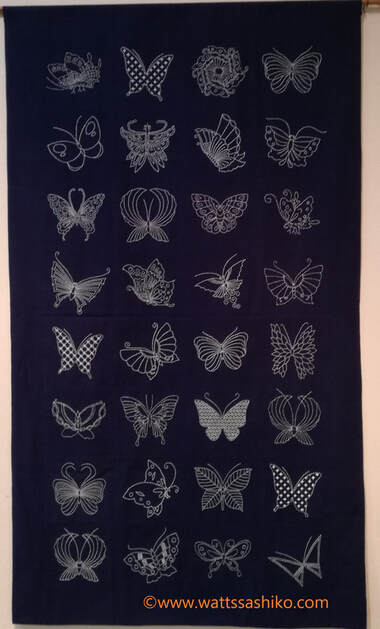
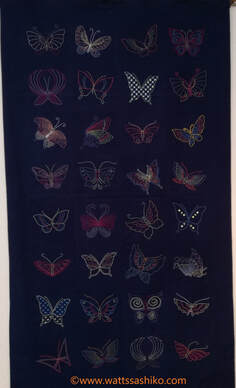


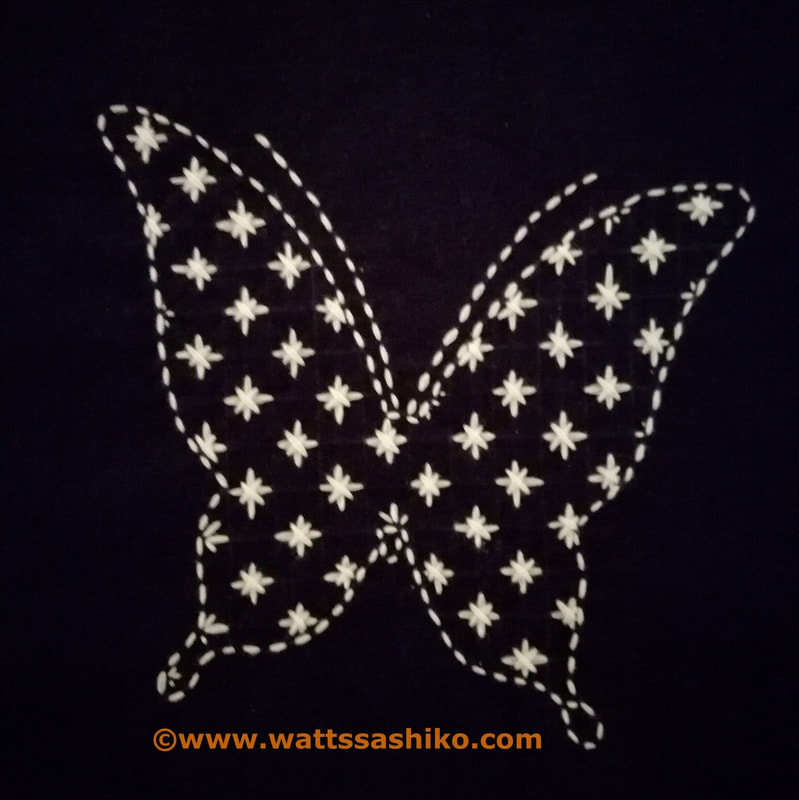




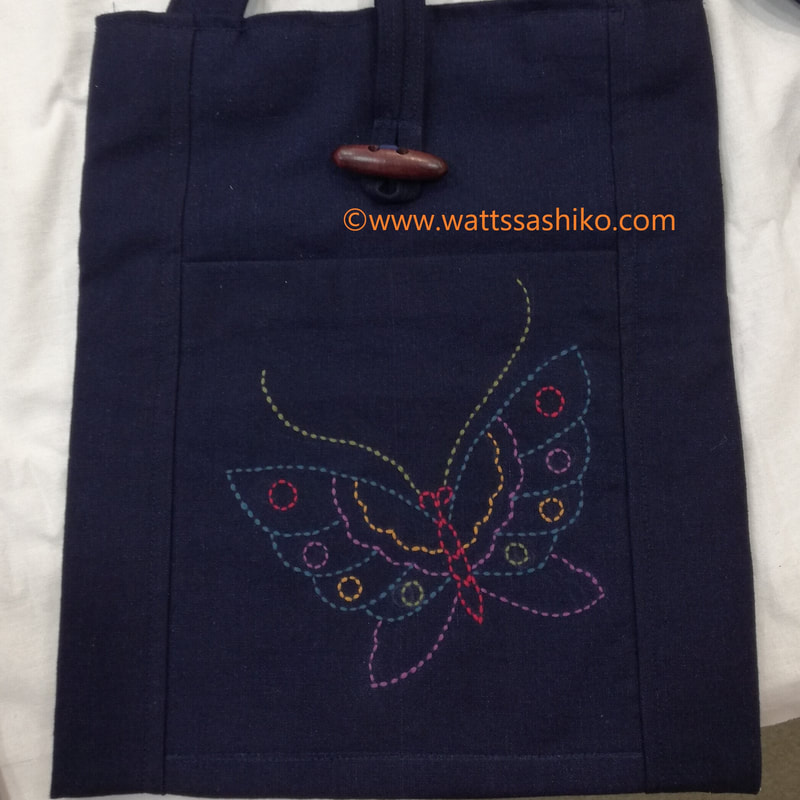
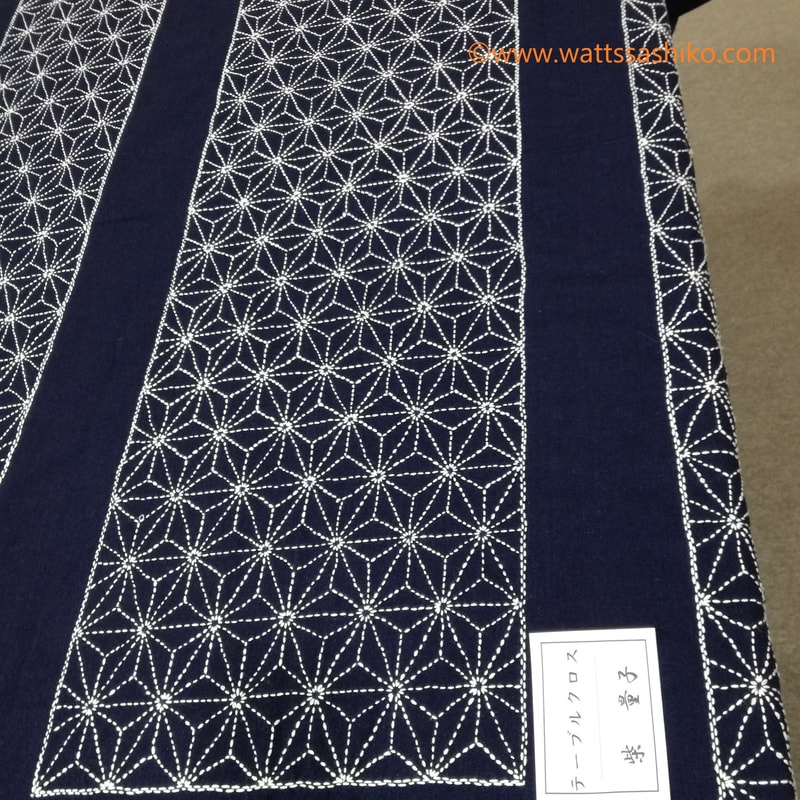
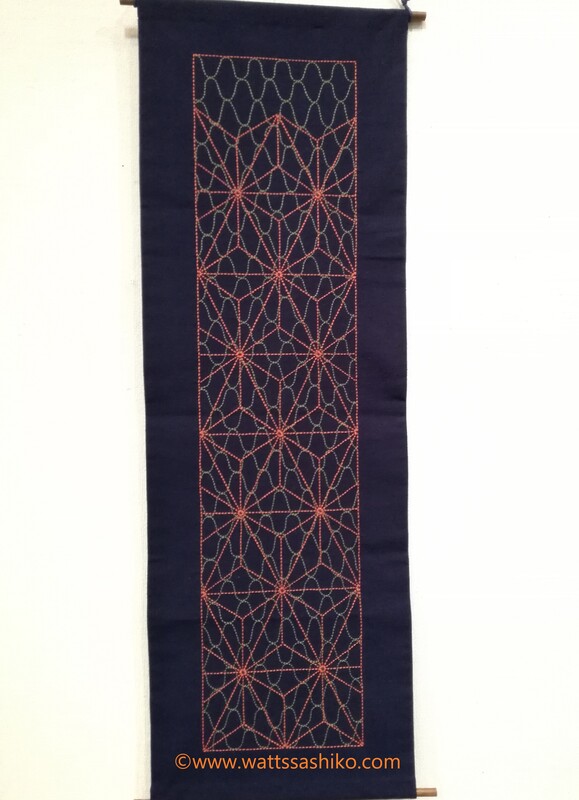
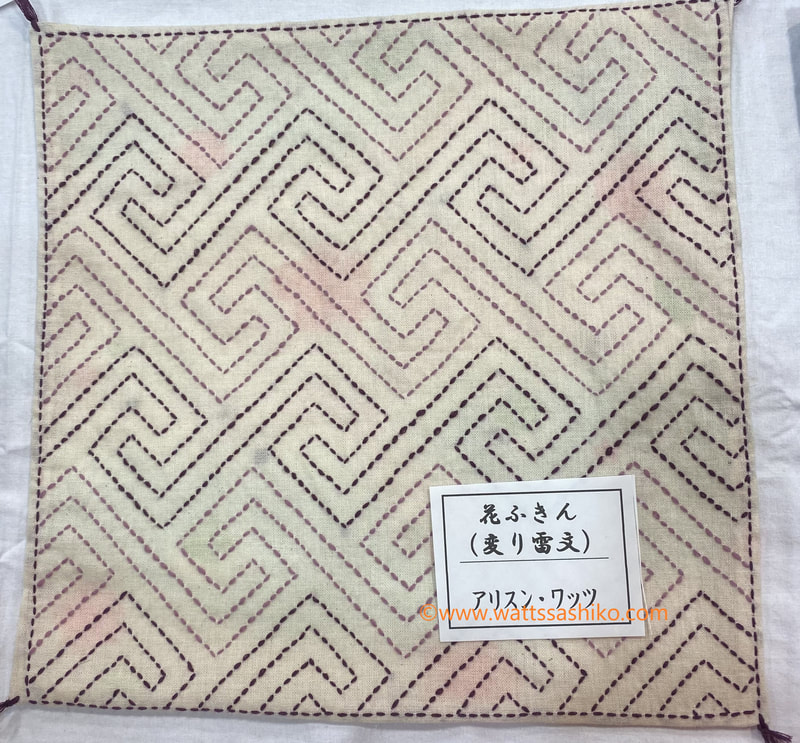


 RSS Feed
RSS Feed



